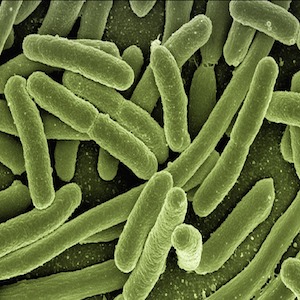Retrospective study on the prevalence of Yersinia enterocolitica in food collected in Umbria region (central Italy)

Submitted: 8 November 2022
Accepted: 14 December 2022
Published: 8 March 2023
Accepted: 14 December 2022
Abstract Views: 1528
PDF: 233
HTML: 8
HTML: 8
Publisher's note
All claims expressed in this article are solely those of the authors and do not necessarily represent those of their affiliated organizations, or those of the publisher, the editors and the reviewers. Any product that may be evaluated in this article or claim that may be made by its manufacturer is not guaranteed or endorsed by the publisher.
All claims expressed in this article are solely those of the authors and do not necessarily represent those of their affiliated organizations, or those of the publisher, the editors and the reviewers. Any product that may be evaluated in this article or claim that may be made by its manufacturer is not guaranteed or endorsed by the publisher.
Similar Articles
- Frédérique Pasquali, Lucia Gambi, Alessandra De Cesare, Cecilia Crippa, Vasco Cadavez , Ursula Gonzales-Barron , Antonio Valero, Fouad Achemchem , Alex Lucchi, Antonio Parisi, Gerardo Manfreda, Resistome and virulome diversity of foodborne pathogens isolated from artisanal food production chain of animal origin in the Mediterranean region , Italian Journal of Food Safety: Vol. 11 No. 4 (2022)
- Cecilia Crippa, Alessandra De Cesare, Alex Lucchi, Antonio Parisi, Gerardo Manfreda, Frédérique Pasquali, Occurrence and genomic characterization of antimicrobial-resistant and potential pathogenic Escherichia coli from Italian artisanal food productions of animal origin , Italian Journal of Food Safety: Vol. 13 No. 2 (2024)
- Nathalie Spoerry Serrano, Claudio Zweifel, Sabrina Corti, Roger Stephan, Microbiological quality and presence of foodborne pathogens in raw milk cheeses and raw meat products marketed at farm level in Switzerland , Italian Journal of Food Safety: Vol. 7 No. 2 (2018)
- Elena Barilli, Cristina Bacci, Zulena Stella Villa, Giuseppe Merialdi, Mario D’Incau, Franco Brindani, Alice Vismarra, Antimicrobial resistance, biofilm synthesis and virulence genes in Salmonella isolated from pigs bred on intensive farms , Italian Journal of Food Safety: Vol. 7 No. 2 (2018)
- Orlandina Di Maro, Yolande T.R. Proroga, Silvia Castellano, Anna Balestrieri, Federico Capuano, Enrico Arletti, Michelangelo Vietina, Melissa Bizzarri, Nicoletta Murru, Maria Francesca Peruzy, Daniela Cristiano, Detection of pathogenic Vibrio spp. in foods: polymerase chain reaction-based screening strategy to rapidly detect pathogenic Vibrio parahaemolyticus, Vibrio cholerae, and Vibrio vulnificus in bivalve mollusks and preliminary results , Italian Journal of Food Safety: Vol. 13 No. 1 (2024)
- Maged A. Al-Garadi, Rasha N. Aziz, Dhary Alewy Almashhadany, Dheyazan M. Ali Al Qabili, Abdulmunem Dherar Abdullah Aljoborey, Validity of cold storage and heat treatment on the deactivation of Vibrio parahaemolyticus isolated from fish meat markets , Italian Journal of Food Safety: Vol. 13 No. 1 (2024)
- Patrizia Serratore, Fabio Ostanello, Pier Luca Passalacqua, Emanuele Zavatta, Giorgia Bignami, Andrea Serraino, Federica Giacometti, First multi-year retrospective study on Vibrio parahaemolyticus and Vibrio vulnificus prevalence in Ruditapes philippinarum harvested in Sacca di Goro, Italy , Italian Journal of Food Safety: Vol. 5 No. 4 (2016)
- Patrizia Serratore, Emanuele Zavatta, Eleonora Fiocchi, Emanuele Serafini, Andrea Serraino, Federica Giacometti, Giorgia Bignami, Preliminary study on the antimicrobial susceptibility pattern related to the genotype of Vibrio vulnificus strains isolated in the north-western Adriatic Sea coastal area , Italian Journal of Food Safety: Vol 6, No 4 (2017)
- Pier Luca Passalacqua, Emanuele Zavatta, Giorgia Bignami, Andrea Serraino, Patrizia Serratore, Occurrence of Vibrio parahaemolyticus, Vibrio cholerae and Vibrio vulnificus in the clam Ruditapes philippinarum (Adams & Reeve, 1850) from Emilia Romagna and Sardinia, Italy , Italian Journal of Food Safety: Vol 5, No 1 (2016)
- Mohammad Shamsur Rahman, Sarah Currò, Lisa Carraro, Barbara Cardazzo, Stefania Balzan, Enrico Novelli, Federico Fontana, Greta Caburlotto, Amedeo Manfrin, Luca Fasolato, Retrospective analysis of Vibrio spp. isolated from marketed crustaceans using multilocus sequence analysis , Italian Journal of Food Safety: Vol. 12 No. 1 (2023)
You may also start an advanced similarity search for this article.

 https://doi.org/10.4081/ijfs.2023.10996
https://doi.org/10.4081/ijfs.2023.10996




